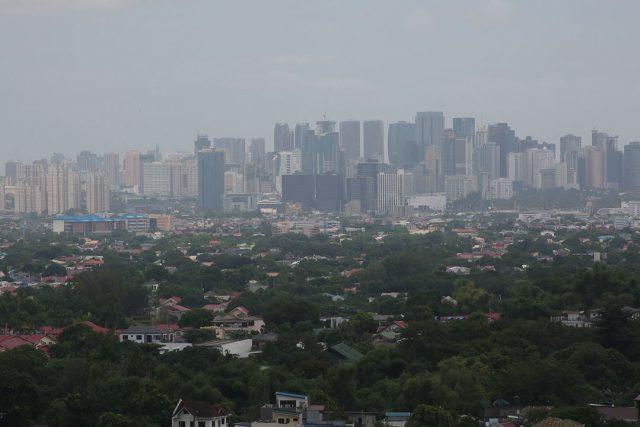Prolonged economic stagnation seen among top risks faced by PHL
By Revin Mikhael D. Ochave, Reporter
PROLONGED ECONOMIC stagnation is seen as one of the top risks faced by the Philippines in the next two years, according to a survey conducted by the World Economic Forum (WEF).
In its Global Risks Report, WEF said Philippine respondents for its Executive Opinion Survey (EOS) identified the top five risks facing the country: prolonged economic stagnation, digital inequality, extreme weather events, employment and livelihood crises, and failure of public infrastructure.
The EOS was conducted among 12,000 leaders across 124 economies between May and September 2021. Respondents were asked to pick the five risks that will pose a “critical threat to your country in the next two years.”
Economic stagnation means “near-zero or slow growth lasting for many years.” The Philippine economy exited recession in the second quarter of 2021, ending five consecutive quarters of contraction. Economic managers expected the economy to have grown by 5-5.5% in 2021.
The country faced strict lockdowns to curb the coronavirus disease 2019 (COVID-19) outbreak.
Sought for industry comment, British Chamber of Commerce Philippines Executive Director Chris Nelson said the country can avoid stagnation by “further liberalizing the economy” particularly with economic reforms such as amendments to the Retail Trade Liberalization Act, Foreign Investments Act, and Public Service Act.
“I think prolonged economic stagnation can be avoided. Growth can return if the right actions are taken. There’s always a risk but there is also always an opportunity. Everything can be mitigated and managed with the right action,” Mr. Nelson said via mobile phone interview.
President Rodrigo R. Duterte recently signed Republic Act (RA) No. 11595 that amended RA No. 8762 or the Retail Trade Liberalization Act, which reduced the required paid-up capital for foreign retailers setting up shop in the country.
“The key is if the Philippines continues to take the right actions, certifying these bills, passing legislations, signing to the Regional Comprehensive Economic Partnership (RCEP), it will greatly assist the economy and mitigate these risks,” Mr. Nelson said.
Danilo C. Lachica, president of the Semiconductor and Electronics Industries in the Philippines, Inc., said via mobile phone message that the biggest factor to consider in terms of the risks faced by the country is the results of the May elections.
“The biggest factor to consider is how the elections will turn out. That could be the biggest risk if the wrong person is voted. If an honest and competent president is elected, then economic recovery and regaining global credibility will happen sooner,” Mr. Lachica said.
Philippine Chamber of Commerce and Industry (PCCI) President George T. Barcelon said via mobile phone message that the other risks are already being worked on by the government and the private sector.
“Out of the five risks, natural calamity is beyond our control but resiliency and continuity are human endeavors,” Mr. Barcelon said.
Makati Business Club Executive Director Francisco “Coco” Alcuaz, Jr. said in mobile phone message that the risks identified in the survey can be mitigated by accelerating vaccination and booster shots against COVID-19.
“The risk can be mitigated by speeding up vaccination and boosters, in large part by allowing the vaccination of five to 11 year olds and allowing boosters for 12 to 17 year olds. Also, by keeping people employed or ‘whole’ by giving businesses breaks or wage support to keep paying workers who can’t work,” Mr. Alcuaz said.
“For the Philippines, we still have a large, young population and our overseas workers, but recovery and catch up will need massive investment, including investment from abroad,” he added.
Mr. Alcuaz also said the country needs to fix its healthcare system to address COVID-19 surges and other future emergencies.
Meanwhile, WEF’s Global Risks Report showed that 84% of respondents were either concerned or worried about the global outlook amid the pandemic.
“With another spike in COVID-19 cases towards the end of 2021, the pandemic continues to stifle countries’ ability to facilitate a sustained recovery,” WEF said in the report.
Most respondents also see the next three years to be characterized by either “consistent volatility and multiple surprises or fractured trajectories that will separate relative winners and losers.”
“Economic challenges flowing from the pandemic persist. The outlook remains weak: at the time of writing, the global economy was expected to be 2.3% smaller by 2024 than it would have been without the pandemic,” WEF said.





Nessun commento:
Posta un commento